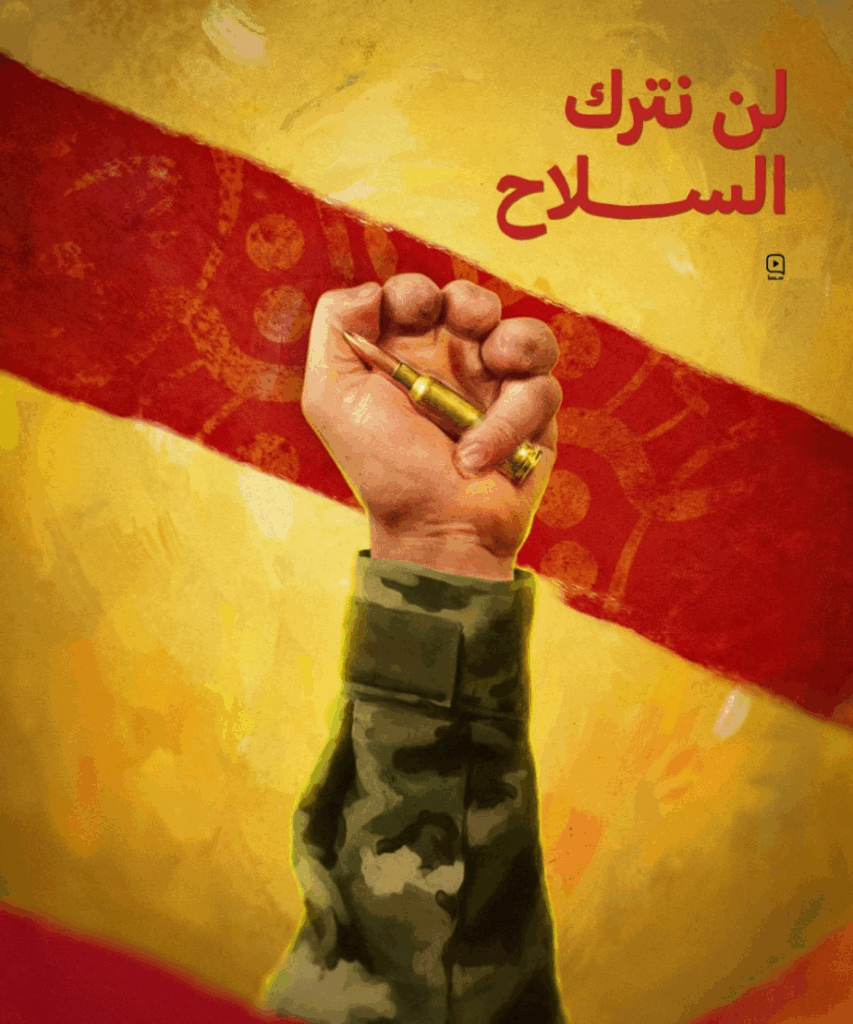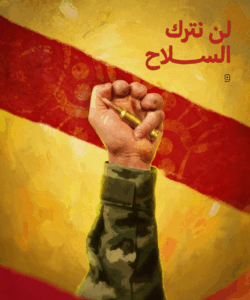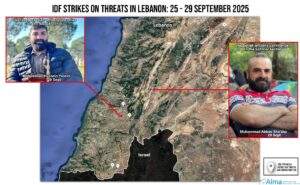In response to the Lebanese government’s decision to dismantle non-state weapons, Hezbollah launched the “Resistance” campaign at the beginning of July. The campaign emphasizes the importance of the weapons for the resistance against Israel and for the defense of Lebanon. The messages Hezbollah reiterates as part of the campaign are: “We will not give up the weapons,” “The weapons are our honor,” and “We will not stop the resistance.” Relinquishing the weapons is portrayed as humiliation, surrender, and defeat to the enemy, as well as a danger to the Lebanese people. Resistance is described as a duty of every generation.
The decision to dismantle the weapons is presented as something imposed from outside—an “Israeli-American project”—to which the Lebanese government surrendered, thereby selling out the Lebanese people to the enemy. Hezbollah, however, is committed to continuing the resistance.
These motifs recur in the speeches of Naim Qassem and other senior Hezbollah officials. For example, in July 2025, Naim Qassem declared that “our defense of the homeland will continue even if the whole world unites against it,” and clarified that “liberation is a duty—even if it takes time and demands many sacrifices.” Qassem repeatedly emphasized the refusal to make any concessions to Israel: “We will not agree to legitimize the occupation in Lebanon, and we will not accept humiliating normalization.” According to him, the continuation of the resistance is not only a right but also a moral obligation, and it will not be denied to future generations.
Qassem explained that Hezbollah will not give up its weapons, since the weapons are not merely rifles and rockets, but rights, blood, sovereignty, and honor. The Hezbollah Secretary General reiterated that what the enemy failed to achieve on the battlefield and in confrontations, it will not be able to achieve through political decisions. Therefore, the Lebanese must understand that the real danger does not lie in the very existence of the resistance’s weapons, but in the Lebanese government’s surrender to American-Zionist dictates.
Similarly, Mustafa Bayram, Member of Parliament and former Minister of Labor, warned that anyone that disarms is inviting the enemy to slaughter Lebanon.
Hussein Hajj Hassan, head of the Baalbek-Hermel Bloc, claimed that the American-Israeli project seeks “to eliminate all resistance” and described the resistance as “a barrier against surrender agreements.”
Hussein Jashi, a member of the “Loyalty to the Resistance” bloc, emphasized that “clinging to the resistance is the only national-moral choice in the face of U.S. threats and illusions of the international community.”
On September 26, Reuters published an interview with Jawad Nasrallah, son of former Hezbollah leader Hassan Nasrallah. Referring to demands to disarm Hezbollah, Jawad clarified that this is not possible, saying: “Not in dreams.” According to him, the sense of alienation and pain experienced by his family and the Shiite community as a whole only strengthened the decision to maintain the path of “resistance” and to regard the possession of weapons as a guarantee for continuing the struggle and defending their dignity.
Hezbollah frequently makes use of visual elements to disseminate its messages. These elements usually include the caption “We will not give up the weapons,” together with the image of a rifle as a symbol of the resistance. For example, in one image the rifle has roots in the ground—symbolizing the depth of the historical resistance, the unbreakable bond between the people, the resistance, and the weapons, the resistance that grows from below—from the people—and the war fought over the land. In another image, a Shiite family is shown, with the father and mother holding a rifle and protecting their children. Once again, the message is one of popular resistance: Hezbollah’s weapons are what protect Lebanon’s citizens, and therefore they will not be abandoned—a resistance passed down from generation to generation.

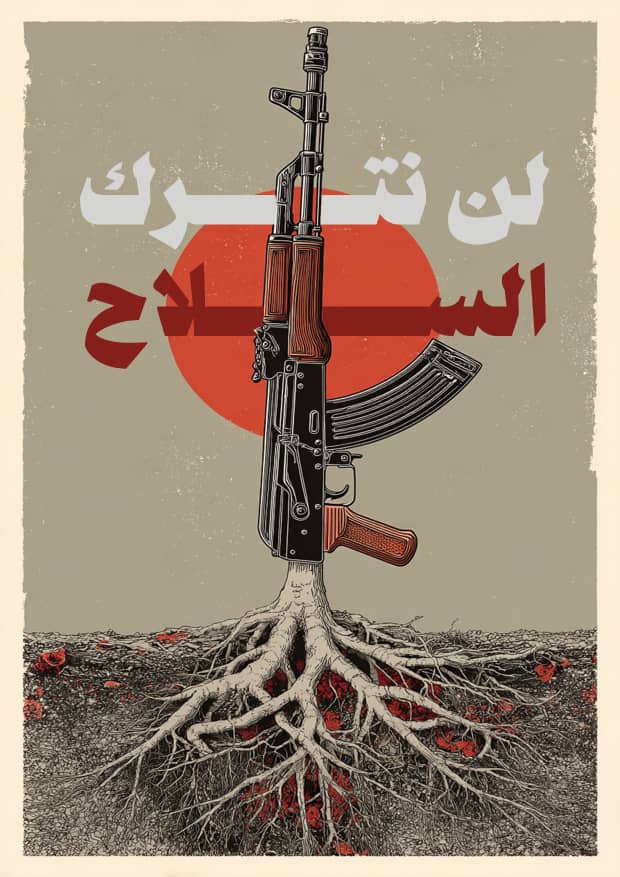
Hezbollah makes use of religious and social events to spread the message of resistance. Thus, this past July, the Shiite community’s Ashura events—commemorating the fall of Imam Hussein at the Battle of Karbala in 680 CE—were used for that purpose. Alongside the mourning ceremonies, huge billboards were hung across Lebanon, from Beirut to Nabatieh, bearing the words: “Our weapons are our honor, and Karbala is our choice.” The parallel to the Battle of Karbala illustrates the willingness to fight to the end in order to preserve its independent power outside the sovereignty of the state.
In a speech on September 27, marking the anniversary of Nasrallah’s assassination, Naim Qassem once again made clear that his organization will not disarm, even if it must wage a “Battle of Karbala.”

The message is clear: the organization’s weapons are not up for negotiation or surrender, not even under pressure from international decisions or demands to hand them over to the Lebanese army. Hezbollah continues to oppose any attempt to discuss the issue, presenting its hold on arms as the embodiment of national and sectarian “honor.” The use of Ashura events is intended to strengthen the sense of cohesion among Hezbollah supporters and to mobilize religious feelings to intensify the struggle.
The public events Hezbollah organizes attract large crowds from among its supporters (thousands and even tens of thousands), which indicates that Hezbollah’s Shiite base in Lebanon, numbering in the hundreds of thousands and more, has not lost faith in the organization and is willing to accept the narratives and mobilize for the resistance.
De facto, it is a captive audience.
According to Hezbollah’s narrative, the resistance and the refusal to give up weapons are responses to Israeli aggression (backed by the U.S.). In a speech on July 29, Naim Qassem asserted that Hezbollah’s weapons are “part of Lebanon’s strength” and that those who demand the surrender of the weapons are demanding their handover to Israel.
Following the Lebanese government’s decision to disarm Hezbollah, the organization issued a written statement on August 6 declaring that the Lebanese government had committed a grave sin by deciding to deprive Lebanon of its weapons for resisting the Israeli enemy… a decision that fully serves Israel’s interests.
In a speech delivered on August 15, Naim Qassem said that the government’s decision to remove “the defensive weapons of the resistance, its people, and Lebanon during a time of aggression” facilitates the killing of “resistance fighters and their families and their expulsion from their lands and homes.” Qassem declared that “the resistance will not give up its weapons as long as the aggression continues, the occupation persists, and we will fight it… if necessary to confront the American-Israeli project, no matter the price.” He called on the government “not to hand the country over to an insatiable Israeli aggressor or to an American tyrant with endless greed,” adding that the state “will bear responsibility for any internal explosion and for the destruction of Lebanon.”
These narratives apparently resonate among Hezbollah’s base. For example, on social media one can find hashtags with the phrases “We will not give up the weapons” and “Resistance through fire, not negotiation.”
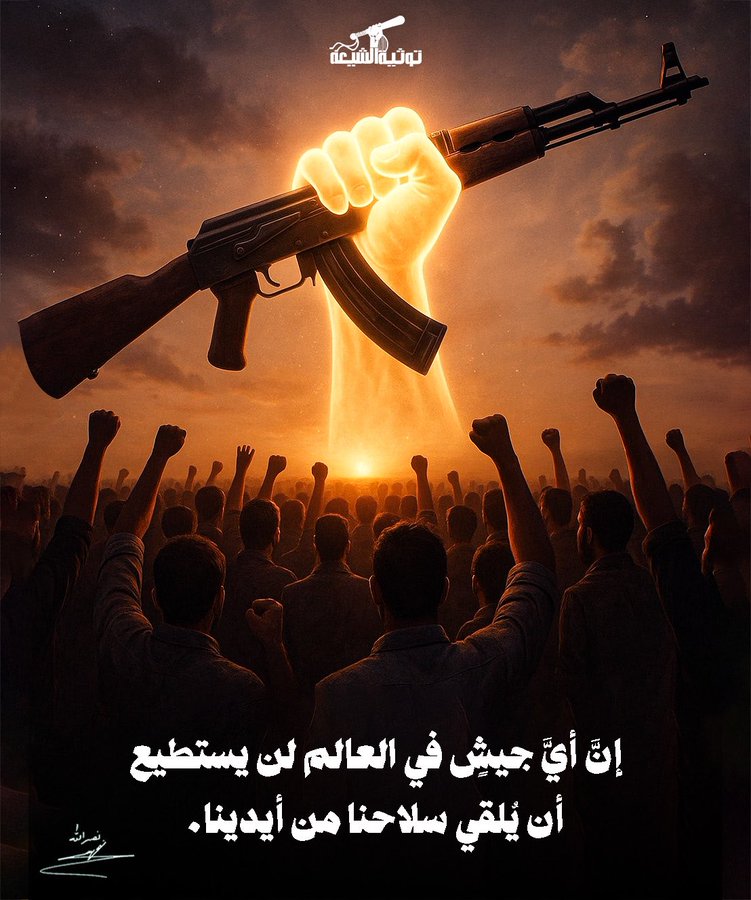
Marking one year since the “Pagers Operation” (September 17), Hezbollah launched another awareness campaign under the title “We Have Recovered,” aimed at emphasizing the organization’s rehabilitation and the continuation of the resistance. The campaign features wounded individuals and survivors of the event who declare that they sacrificed their bodies for the sake of the resistance and express pride in the price they paid. In this campaign as well, weapons remain central: Lebanon’s recovery is portrayed as a result of the continuation of the resistance.
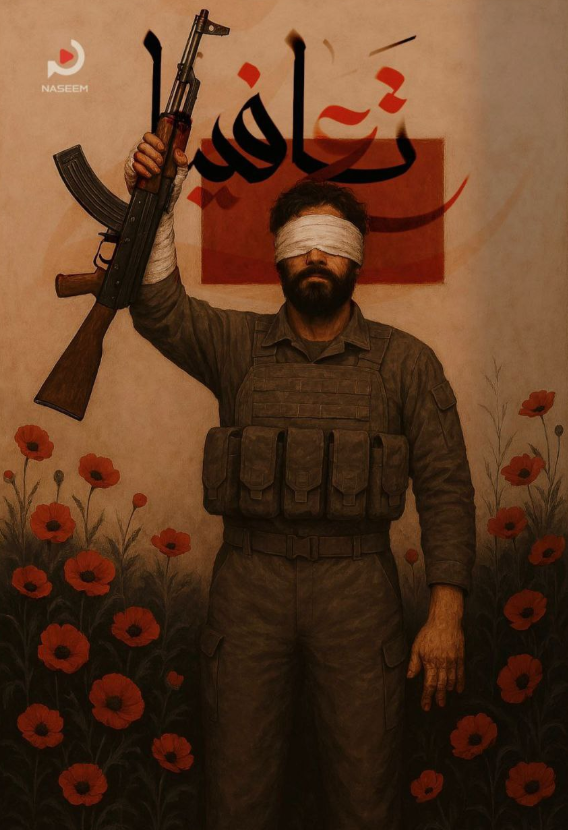
Hezbollah’s resistance campaign is intended to strengthen the determination of its Shiite base in the face of internal and international pressure to disarm. The campaign justifies the suffering Hezbollah supporters have endured and will continue to endure if they refuse to give up their weapons but portrays their struggle not only as a duty but also as a right.
Hezbollah mobilizes the support of its base through narratives of Israeli aggression and by instilling fear that if they give up their weapons, they will no longer be able to defend Lebanon, and Lebanese citizens will be left vulnerable to Israeli occupation. According to the narrative, the decision to disarm is one imposed on Lebanon from outside, serving Israel’s interests and intended to subdue Lebanon and hand over its citizens and lands to the Israeli enemy.
According to this narrative, weapons are the honor of the Lebanese people and giving them up is depicted as humiliation and defeat. The goal of the campaign is to direct the anger of Hezbollah’s supporters against the Lebanese government, Israel, and the United States, thereby rallying them to the resistance. Hezbollah, it claims, cannot give up its weapons because of Israeli aggression; the Lebanese government does not act against Israel; and the U.S. serves Israeli interests. Therefore, Lebanese citizens suffer, and only Hezbollah fights on their behalf.
Hezbollah’s narrative places the blame for the failure of disarmament, and the consequences it will bring to Lebanon, on Israel. The organization uses such narratives and campaigns to entrench its ideology within its base and to reinforce support and trust in the movement.
The rifle on Hezbollah’s flag is not decoration. It is a statement.
This article may be summed up by a past declaration of Hassan Nasrallah: “They will take our souls before they take our weapons—not because we love the weapons, but because the weapons are a symbol of honor and pride…”
“Resistance” is the core of the organization.

